What is Neurotherapy?
Neurotherapy, also known as neurofeedback or EEG biofeedback, is a scientifically backed, non-invasive therapeutic technique that focuses on optimizing brain function by monitoring and training brainwave activity. It is based on the principles of neuroplasticity, the brain’s ability to reorganize and form new neural connections in response to experiences, thoughts, and behaviors.
This therapy involves the use of advanced EEG (electroencephalogram) technology to measure brainwave activity in real-time. Through a structured feedback system, individuals are trained to self-regulate their brain patterns, promoting optimal cognitive function, emotional balance, and neurological health. By reinforcing desirable brainwave patterns and reducing irregularities, neurotherapy can help alleviate symptoms of various mental, emotional, and neurological conditions.
Neurotherapy is widely recognized for its effectiveness in managing disorders such as anxiety, depression, ADHD, PTSD, migraines, chronic pain, insomnia, and even neurological conditions like epilepsy or post-stroke recovery. Unlike traditional treatments that rely on medication, neurotherapy is a drug-free approach that encourages the brain to function more efficiently on its own. It empowers individuals to take control of their mental and emotional well-being by enhancing brain performance naturally and safely.
Key Points About Neurotherapy
- Non-Invasive & Drug-Free: Uses brainwave monitoring without the need for medication.
- Personalized Treatment: Tailored based on individual brainwave patterns.
- Enhances Brain Function: Helps improve focus, memory, emotional stability, and mental clarity.
- Effective for Various Conditions: Used for stress, anxiety, depression, migraines, ADHD, and chronic pain.
- Based on Neuroplasticity: Trains the brain to develop healthier neural pathways.
- Real-Time Feedback: Uses EEG sensors to provide instant brainwave data for improvement.
- Supports Self-Regulation: Encourages the brain to function optimally on its own over time.
- Safe & Scientifically Backed: Studies show its effectiveness in improving mental and neurological health.

Neck and Shoulder Pain
Neck and shoulder pain are common conditions caused by poor posture, muscle tension, nerve compression, or stress. Conventional treatments often focus on pain relief through medication, but neurotherapy offers a non-invasive, long-term solution by addressing the nervous system’s role in pain perception and muscle function.
Common Causes & Neurotherapy Benefits
- Muscle Tension & Postural Strain – Neurotherapy improves nerve signaling to relax muscles and correct posture.
- Cervical Spondylosis & Disc Issues – Enhances nerve function, reducing pain and stiffness caused by degenerative changes.
- Nerve Compression (e.g., Pinched Nerve) – Stimulates nerve pathways to reduce inflammation and restore function.
- Stress & Anxiety-Related Pain – Balances the nervous system to alleviate tension-related discomfort.
Neurotherapy Techniques for Pain Relief
- Biofeedback Therapy – Helps regulate nerve activity, reducing muscle tension and improving movement.
- Brainwave Entrainment – Adjusts brain signals to minimize chronic pain perception.
- Vagus Nerve Stimulation (VNS) – Enhances relaxation and promotes natural pain relief.
Holistic Support for Lasting Relief
For optimal results, neurotherapy is combined with:
- Postural correction and ergonomic adjustments to prevent strain.
- Breathing exercises and stress management to reduce tension-related pain.
- Gentle stretching and movement therapy to improve mobility and circulation.

Stomach Pain / Abdominal Pain
Stomach Pain / Abdominal Pain and Neurotherapy Stomach pain, or abdominal pain, can stem from digestive disorders, infections, stress, or nervous system imbalances. Traditional treatments often rely on medication, but neurotherapy provides a natural, non-invasive approach by optimizing gut-brain communication and restoring nervous system balance.
Common Causes & Neurotherapy Benefits
● Indigestion & Acid Reflux – Regulates nerve signals to prevent acid overproduction and enhance digestion.
● Irritable Bowel Syndrome (IBS) & Constipation – Improves gut motility and alleviates bloating.
● Stress & Anxiety-Related Digestive Issues – Calms the nervous system, reducing the impact of stress on digestion.
● Chronic Pain & Inflammation – Stimulates nerve function to support healing and pain management.
Neurotherapy Techniques for Digestive Health
● Biofeedback Therapy – Trains the brain to regulate autonomic functions and improve digestion.
● Vagus Nerve Stimulation (VNS) – Activates the body’s relaxation response, promoting gut function.
● Brainwave Entrainment – Adjusts neural activity to reduce stress-induced digestive disruptions.
Holistic Support for Lasting Relief
For optimal results, neurotherapy is complemented by:
● A balanced diet rich in fiber and gut-friendly nutrients.
● Breathing exercises and meditation to manage stress.
● Yoga and movement therapy to improve circulation and digestion.
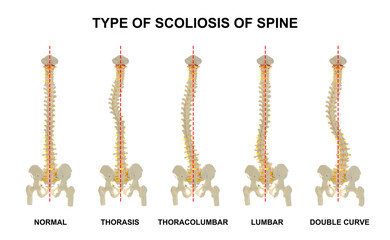
Scoliosis
Scoliosis is a condition characterized by an abnormal lateral curvature of the spine, which can cause pain, postural imbalances, and nerve dysfunction. While traditional treatments focus on braces or surgery, neurotherapy offers a non-invasive approach by improving nerve communication, muscle coordination, and spinal alignment.
Common Causes & Neurotherapy Benefits
- Congenital & Idiopathic Scoliosis – Neurotherapy enhances neural control to support spinal balance.
- Muscular Imbalances & Postural Strain – Regulates nerve signals to promote better posture and muscle function.
- Nerve Compression & Pain – Stimulates nerve pathways to relieve tension and discomfort.
- Limited Mobility & Spinal Rigidity – Optimizes neuromuscular coordination for improved flexibility.
Neurotherapy Techniques for Scoliosis Management
- Biofeedback Therapy – Helps retrain nerve pathways to improve spinal alignment.
- Brainwave Entrainment – Adjusts neural activity to reduce pain perception and muscle stiffness.
- Vagus Nerve Stimulation (VNS) – Enhances relaxation and promotes natural healing.
Holistic Support for Long-Term Relief
For best results, neurotherapy is combined with:
- Postural correction exercises to maintain spinal balance.
- Breathing and relaxation techniques to reduce tension-related discomfort.
- Targeted movement therapy to enhance flexibility and strength.
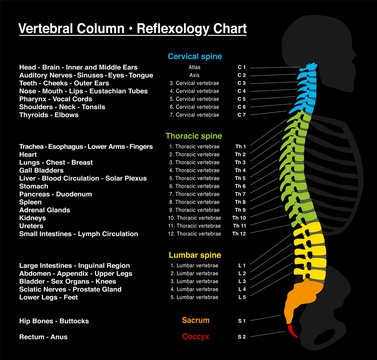
Spinal Misalignment & Reflexology Issues
Spinal misalignment can lead to chronic pain, nerve dysfunction, and mobility issues, while reflexology imbalances may disrupt the body’s natural healing processes. Traditional treatments focus on physical adjustments, but neurotherapy offers a non-invasive approach by restoring nerve communication and optimizing musculoskeletal function.
Common Causes & Neurotherapy Benefits
- Postural Imbalances & Sedentary Lifestyle – Corrects nerve signaling to improve posture and alignment.
- Herniated Discs & Spinal Degeneration – Reduces pain and inflammation by enhancing nervous system regulation.
- Nerve Compression & Sciatica – Stimulates neural pathways to relieve pinched nerves and restore mobility.
- Reflexology Imbalances – Optimizes nerve reflex points to promote overall well-being and pain relief.
Neurotherapy Techniques for Spinal & Reflexology Health
- Biofeedback Therapy – Helps regulate nerve activity to support spinal alignment and function.
- Brainwave Entrainment – Adjusts neural patterns to reduce chronic pain perception.
- Vagus Nerve Stimulation (VNS) – Enhances relaxation and supports natural healing.
Holistic Support for Lasting Relief
For optimal results, neurotherapy is complemented by:
- Postural correction exercises to maintain spinal health.
- Breathing and relaxation techniques to reduce muscle tension.
- Reflexology-based therapy to stimulate nerve pathways and promote healing.

Lower Back Pain
Lower back pain is a widespread issue caused by poor posture, muscle strain, spinal misalignment, or nerve compression. While conventional treatments often rely on painkillers or surgery, neurotherapy offers a non-invasive solution by addressing the nervous system’s role in pain management and mobility.
Common Causes & Neurotherapy Benefits
- Muscle Strain & Postural Issues – Neurotherapy improves nerve function to reduce tension and correct posture.
- Herniated Discs & Spinal Misalignment – Enhances nerve communication to relieve pain and restore spinal balance.
- Sciatica & Nerve Compression – Stimulates nerve pathways to reduce inflammation and improve mobility.
- Chronic Stress & Pain Sensitivity – Balances brainwave activity to lower stress-related back pain.
Neurotherapy Techniques for Back Pain Relief
- Biofeedback Therapy – Regulates nerve signaling to minimize muscle stiffness and improve flexibility.
- Brainwave Entrainment – Adjusts neural activity to reduce chronic pain perception.
- Vagus Nerve Stimulation (VNS) – Activates the body’s natural pain-relief mechanisms.
Holistic Support for Lasting Relief
For optimal results, neurotherapy is combined with:
- Postural correction and movement therapy to prevent strain.
- Breathing exercises and relaxation techniques to reduce stress-induced pain.
- Core-strengthening exercises to support spinal health.
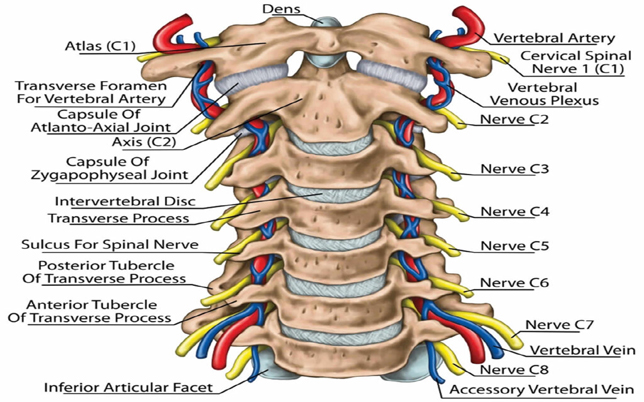
Cerivical Spine Anatomy
The cervical spine, consisting of seven vertebrae (C1-C7), plays a crucial role in supporting the head, enabling movement, and protecting the spinal cord. Misalignment, nerve compression, or muscle tension in this region can lead to chronic pain, stiffness, and neurological issues. Neurotherapy provides a non-invasive approach to optimizing nerve function and maintaining cervical spine health.
Key Components & Neurotherapy Benefits
- Vertebrae (C1-C7) & Discs – Supports flexibility and movement; neurotherapy improves nerve signaling to enhance spinal alignment.
- Spinal Cord & Nerve Pathways – Controls motor and sensory functions; neurotherapy enhances communication between the brain and body.
- Muscles & Ligaments – Provides stability; neurotherapy reduces tension and promotes mobility.
- Blood Supply & Reflex Points – Nourishes the brain and spine; neurotherapy improves circulation and stimulates healing.
Neurotherapy Techniques for Cervical Spine Health
- Biofeedback Therapy – Helps regulate nerve activity to reduce tension and stiffness.
- Brainwave Entrainment – Adjusts neural patterns to decrease pain sensitivity.
- Vagus Nerve Stimulation (VNS) – Promotes relaxation and enhances spinal healing.
Holistic Support for Long-Term Relief
For optimal results, neurotherapy is combined with:
- Postural correction and ergonomic adjustments to prevent strain.
- Targeted stretching and movement therapy to improve mobility.
- Breathing exercises and stress management to reduce muscle tension.
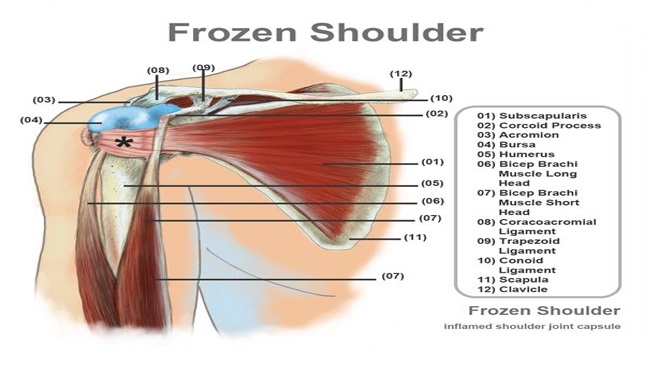
Frozen Shoulder
Frozen shoulder (adhesive capsulitis) is a condition characterized by stiffness, pain, and restricted movement in the shoulder joint. It occurs due to inflammation, scar tissue formation, or nerve dysfunction. While traditional treatments focus on physical therapy and medication, neurotherapy offers a natural, non-invasive solution by restoring nerve communication and improving muscle function.
Common Causes & Neurotherapy Benefits
- Inflammation & Scar Tissue Formation – Neurotherapy enhances nerve function to promote tissue healing.
- Nerve Compression & Poor Circulation – Stimulates neural pathways to improve blood flow and reduce pain.
- Stress & Neuromuscular Dysfunction – Balances the nervous system to prevent muscle stiffness.
- Limited Range of Motion – Retrains the brain to restore movement patterns and flexibility.
Neurotherapy Techniques for Frozen Shoulder
- Biofeedback Therapy – Regulates nerve signaling to relieve muscle tension and stiffness.
- Brainwave Entrainment – Adjusts neural patterns to reduce chronic pain perception.
- Vagus Nerve Stimulation (VNS) – Activates natural healing processes to improve mobility.
Holistic Support for Long-Term Relief
For optimal recovery, neurotherapy is combined with:
- Postural correction exercises to prevent strain.
- Gentle stretching and movement therapy to restore flexibility.
- Breathing techniques and relaxation therapy to reduce tension-related pain.
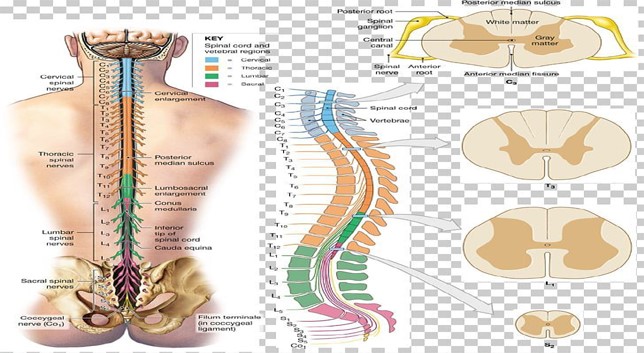
The Spinal Cord and Nervous System Pathways
The spinal cord is the main communication highway between the brain and body, transmitting sensory and motor signals through a complex network of nerves. Any disruption in these pathways—due to injury, misalignment, or nerve dysfunction—can lead to pain, mobility issues, and neurological disorders. Neurotherapy focuses on optimizing nerve function, promoting healing, and restoring communication between the brain and body.
Key Components & Neurotherapy Benefits
- Sensory Pathways – Transmit pain, temperature, and touch signals; neurotherapy enhances nerve function to improve sensory processing.
- Motor Pathways – Control voluntary movements; neurotherapy optimizes neural signaling for better muscle coordination.
- Autonomic Nervous System (Sympathetic & Parasympathetic) – Regulates involuntary functions like digestion, heart rate, and stress response; neurotherapy balances autonomic activity for overall well-being.
- Spinal Reflex Pathways – Enable quick, automatic responses; neurotherapy refines reflex control for improved mobility and function.
Neurotherapy Techniques for Nervous System Health
- Biofeedback Therapy – Trains the brain to regulate nerve activity and improve function.
- Brainwave Entrainment – Modifies neural patterns to reduce pain and enhance nerve regeneration.
- Vagus Nerve Stimulation (VNS) – Activates the body’s natural healing mechanisms for better nerve health.
Holistic Support for Nervous System Optimization
For long-term benefits, neurotherapy is complemented by:
- Postural correction and spinal alignment to prevent nerve compression.
- Breathing techniques and relaxation therapy to improve nervous system balance.
- Nutritional support and hydration to maintain nerve health
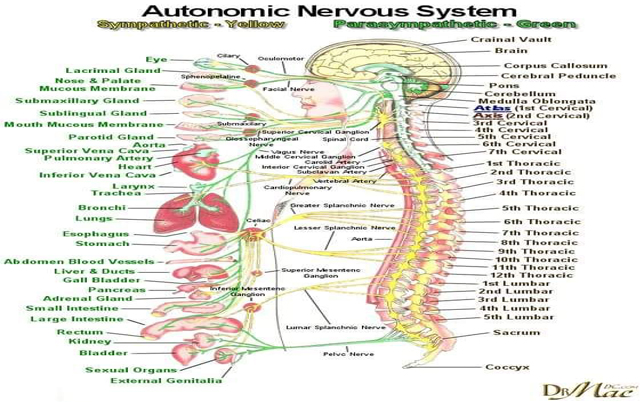
Autonomic Nervous System
The autonomic nervous system (ANS) is responsible for regulating involuntary bodily functions such as heart rate, digestion, breathing, and stress response. It consists of two main divisions:
- Sympathetic Nervous System (Fight-or-Flight) – Activates in response to stress, increasing heart rate and energy levels.
- Parasympathetic Nervous System (Rest-and-Digest) – Promotes relaxation, digestion, and healing.
An imbalance in the ANS can lead to chronic stress, digestive disorders, high blood pressure, and fatigue. Neurotherapy helps restore balance by regulating nervous system activity and enhancing overall well-being.
Common Issues & Neurotherapy Benefits
- Chronic Stress & Anxiety – Neurotherapy calms the nervous system, reducing overactivation of the sympathetic response.
- Digestive Disorders (IBS, Acid Reflux) – Improves vagus nerve function for better digestion and gut health.
- High Blood Pressure & Cardiovascular Issues – Regulates autonomic signals to promote cardiovascular balance.
- Fatigue & Poor Sleep – Enhances brainwave activity for improved relaxation and energy restoration.
Neurotherapy Techniques for ANS Regulation
- Biofeedback Therapy – Helps control heart rate, breathing, and stress response.
- Brainwave Entrainment – Adjusts neural activity to promote relaxation and autonomic balance.
- Vagus Nerve Stimulation (VNS) – Enhances the parasympathetic response for better healing and recovery.
Holistic Support for Nervous System Health
For optimal ANS function, neurotherapy is combined with:
- Breathing exercises and meditation to regulate stress response.
- Balanced nutrition and hydration to support nerve function.
- Gentle movement therapy to improve circulation and nervous system health.

Headache (Possibly Tension Headache or Migraine)
Headaches, including tension headaches and migraines, are often caused by stress, nerve dysfunction, poor posture, or vascular issues. While painkillers offer temporary relief, neurotherapy provides a long-term, drug-free solution by addressing the nervous system’s role in pain perception and brain function.
Common Causes & Neurotherapy Benefits
- Muscle Tension & Postural Strain – Neurotherapy regulates nerve signals to relieve muscle tightness and improve posture.
- Nerve Sensitivity & Brainwave Imbalances – Optimizes neural activity to reduce migraine frequency and severity.
- Vascular Issues & Poor Circulation – Enhances blood flow and autonomic balance to prevent headache triggers.
- Stress & Anxiety – Calms the nervous system to minimize tension-related headaches.
Neurotherapy Techniques for Headache Relief
- Biofeedback Therapy – Helps control nerve responses to reduce headache intensity and frequency.
- Brainwave Entrainment – Adjusts neural patterns to improve relaxation and decrease pain perception.
- Vagus Nerve Stimulation (VNS) – Enhances parasympathetic activity to promote natural pain relief.
Holistic Support for Lasting Relief
For optimal results, neurotherapy is combined with:
- Breathing exercises and stress management to reduce headache triggers.
- Postural correction and ergonomic adjustments to prevent muscle strain.
- Nutritional and hydration strategies to support brain function.

